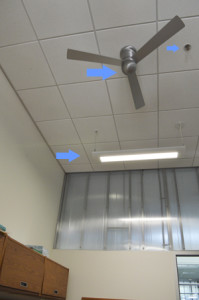Training: Problem-Solution Attributes
Friday, August 15th, 2014From this summer’s youth workshops, I learned to appreciate more the connection between problems and their solutions. Specifically, I learned to appreciate “attributes”, a term used by one of our docents at the Cantor Arts Center when she was asking students to look for visual clues in artwork.
A new skill that we will incorporate into our 2015 workshops is problem definition and problem statement development (it is a project rate-limiting step that takes a while to activate). For our training approach, we will use a reverse (people usually think of a problem first then the solution) thinking method where we choose a solution (they’re all around) then work out the problem they were intended to solve.
1. Look around you and pick an object to observe closely.*
2. What are its attributes? Think of both its forms and functions. Think of how you interact with it.

3. Describe the problem that this solution addresses. Remember that this is a trained skill so initially the thoughts may be slow to form, but we still want to use our creative thinking so do this step fast – within 30-60 seconds.
Repeat these steps as part of your training. Increase the detail of your problem description gradually – without becoming complex. You can develop scoping as well as depth skills. Apply your EQ as well so that others can empathize with the problem.
Bottom line: Practice this regularly. It should take no more than 3 minutes each time. Eventually you will understand how to form an effective problem statement by observing a problem that needs to be solved.
*Need a hint to get started? Pick something on you or in your pockets. Or look in your bag/briefcase. For something more challenging, choose something that you probably see often in passing but don’t really think much about it.
